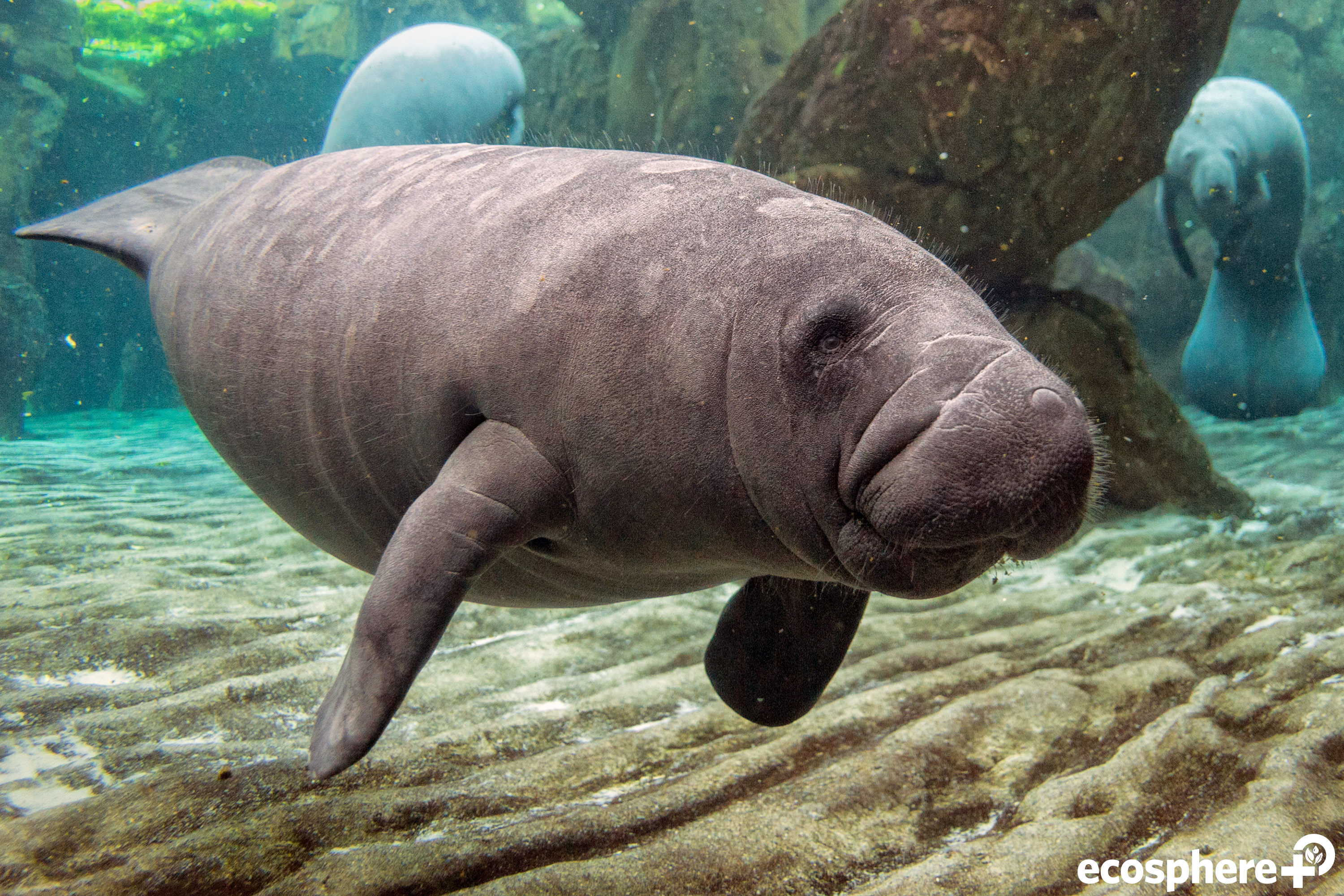The Conservation Coast project in Guatemala is located in the species-rich Izabal region which runs along the country’s Caribbean coast. It is considered a centre of endemism, as it contains numerous species native only to this area, and harbours an important number of species classified as threatened by the IUCN. One of these, is the Antillean or Caribbean Manatee.
This majestic creature, once believed to be a mermaid by sailors, is also known as the Sea Cow due to its round body and small head, and its affinity for sea grass! It’s a graceful animal, and we’re happy that Manatees can be found swimming in the coastal waters off our project along the Guatemalan Caribbean coast. Antillean Manatee’s inhabit warm, mostly shallow coastal waters, primarily in the tropical and subtropical zone from the Bahamas to Brazil. The Manatee is limited to these temperatures due to its low metabolic rate and lack of a thick layer of insulating body fat. Propelling themselves through the water with a spatula like tail fin, Manatees spend their lives grazing on mangrove leaves and seagrasses, and rolling and playing in their warm water home. These creatures are solitary, so you won’t often see many of them together, and are slow movers, having evolved without any natural predators.
Despite their extensive habitat, Manatee populations are dwindling – they are now classified as endangered by the IUCN. Scientists estimate that there are around 2,500 remaining Antillean Manatees in the wild, although fragmented populations make a truly accurate assessment of their numbers difficult. The greatest threat to the Antillean Manatee is human activity, with agricultural pollution, mining, tourism and fishing having a devastating effect on their habitat.
Luckily for the Manatee, efforts have been stepped up in recent years to address their declining populations. In the Izabal region of Guatemala, where the Conservation Coast project is located, historic overfishing and coastal degradation has caused a drop in marine species abundance, increasing marine habitat fragmentation and affecting ecosystem function. FUNDAECO, the project’s implementing partner on the ground, leads project activities to address these drivers and co-manages a legally protected area called the Chocón Machacas Biotope, which was specifically created to protect coastal wetland habitat for the West Indian Manatee.
Through FUNDAECO’s work, funded by climate finance from Ecosphere+ clients, the lives of over 3,250 families in the region are being transformed by job creation, agricultural training and increased access to legal and financial resources. This support is transitioning communities away from livelihoods that put pressure on the natural environment, such as the Manatees’ marine habitat, and is building sustainable, resilient revenue streams for the long-term. FUNDAECO also places an important focus on the biological research and monitoring of marine biodiversity in the project area in the hopes of better understanding species like the West Indian Manatee, and how they are responding to a changing habitat. Project activities promote conservation education through organised events, workshops, fairs and exhibitions to engage local communities in how economic pressures effect biodiversity and to improve conservation outcomes.
So, there is hope still for the West Indian Manatee to build back its numbers, especially here on the Caribbean Coast of Guatemala. We’re always happy to hear, as we did last month, of project staff spotting manatees bobbing just off the coast! It shows that coordinated action and targeted intervention really can have a meaningful effect on species like the Manatee, who we so critically must protect.
Contact us to build the REDD+ Conservation Coast project in Guatemala into your climate strategy.
